Dropshipping in the current year will require robust tools and strategies to maximize profits. Shopify dropshipping apps are useful for businesses of all sizes, from single-owner boutiques to multi-location chains. Everything from product sourcing and inventory management to marketing automation and customer engagement portals is on our must-have list.

Let’s discuss how this form of retail is useful, what tools help dropshippers, and which ones will work for you.
What is Dropshipping?
With drop shipment, a retailer can fulfill customer orders without ever touching inventory. Instead, the item is sent directly from the manufacturer or supplier to the buyer.
For companies of any size, this eliminates the need to invest heavily in stocking physical goods before entering the e-commerce market. Also, because there is no need for storage space, retailers have more leeway in devising new ways to conduct business. Suppliers assume all liability for returned or unsold goods, further reducing retailers’ exposure to risk. This is especially helpful for Shopify online stores because of their limited involvement in the supply chain.

Equally important is that you can make money from home on Amazon, eBay, Walmart, and other international marketplaces.
So Why is Dropshipping a Good Business Model?
The key reason is that dropship services make it simpler than ever to launch a low-budget online shop. Here’s how it works:
- Drop selling enables you to run your business with little to no overhead because it eliminates the need for costly inventory on hand.
- There is no requirement for storage or warehousing, which is a major plus. Rather than keeping stock of goods before selling them to customers, online merchants accept payments directly from manufacturers. As a result, orders are processed faster, and you can try out novel items with greater ease.
These two advantages are particularly useful because they reduce initial investment and boost early earnings.
What Are the Best Shopify Dropshipping Apps?
Dropshipping Shopify programs help retailers manage inventory and automate shipping. They provide convenient functions like stock monitoring, order processing, and more with a focus on ease of use. Thus, their goal is to improve productivity and effectiveness without decreasing quality or customer satisfaction.
The following are the top ten Shopify apps according to customer reviews.
App #1: DSers
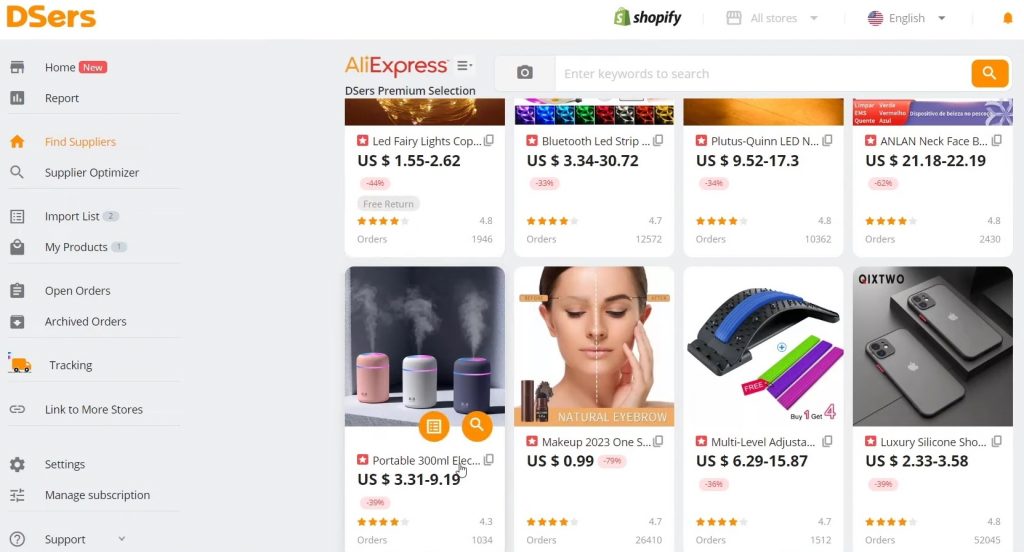
With DSers, you’ll have everything you need to dropship from AliExpress. It makes it easier for businesspeople all over the world to look for new, profitable goods and reliable suppliers. So, you can use DSers to automate:
- time-consuming tasks like product management,
- bulk order processing,
- tracking package statuses so that you can focus on what matters most—growing your business.
In addition, the prices are reasonable in comparison to other available options, so you can save both cash and time.
Check out the price list:
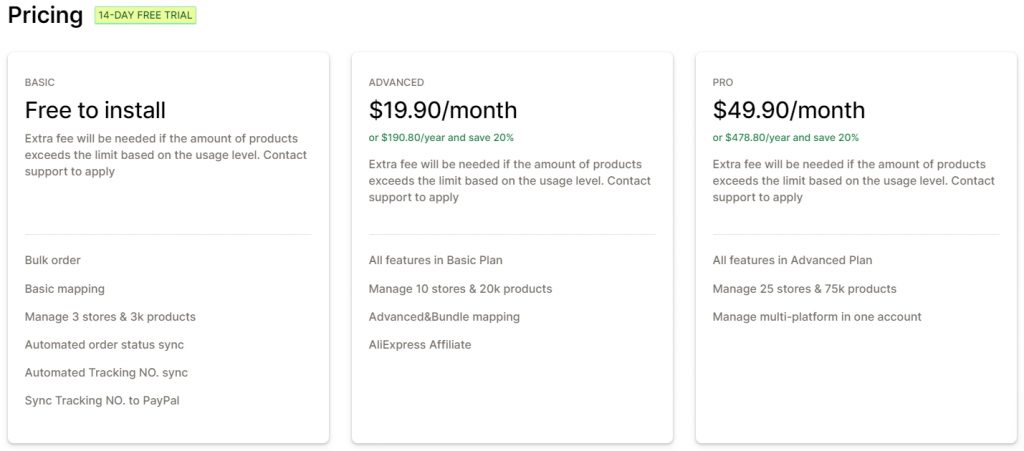
App #2: Vitals
Using Vitals, you can turn your store into a lively and revenue-generating attraction. More than 40 tools are available in Vitals, all of which work together to maximize conversion rates. Prepare yourself for success with tools like a currency converter and an upsell builder.
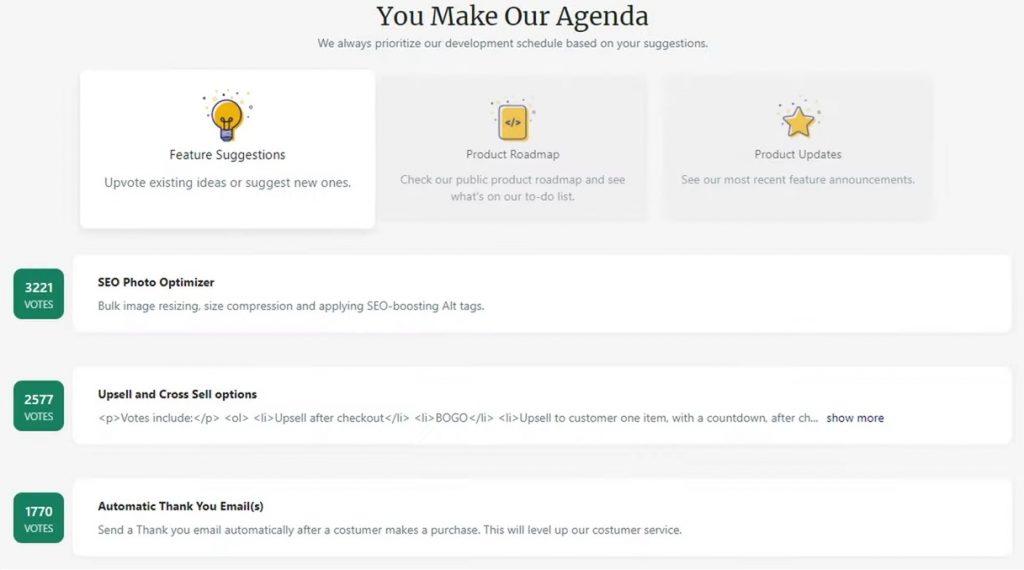
Plus, access features such as:
- wishlists,
- e-mail marketing popups (to grow your email list),
- Instagram feed,
- trust marks,
- online chat.

App #3: Zendrop
Say no more if dealing with unreliable vendors has worn you down. Zendrop was made to help online business owners avoid the pitfalls of using untrustworthy suppliers. This intuitive Shopify app simplifies the whole transaction by providing faster shipping options, an add-to-store button, and 24/7 support.
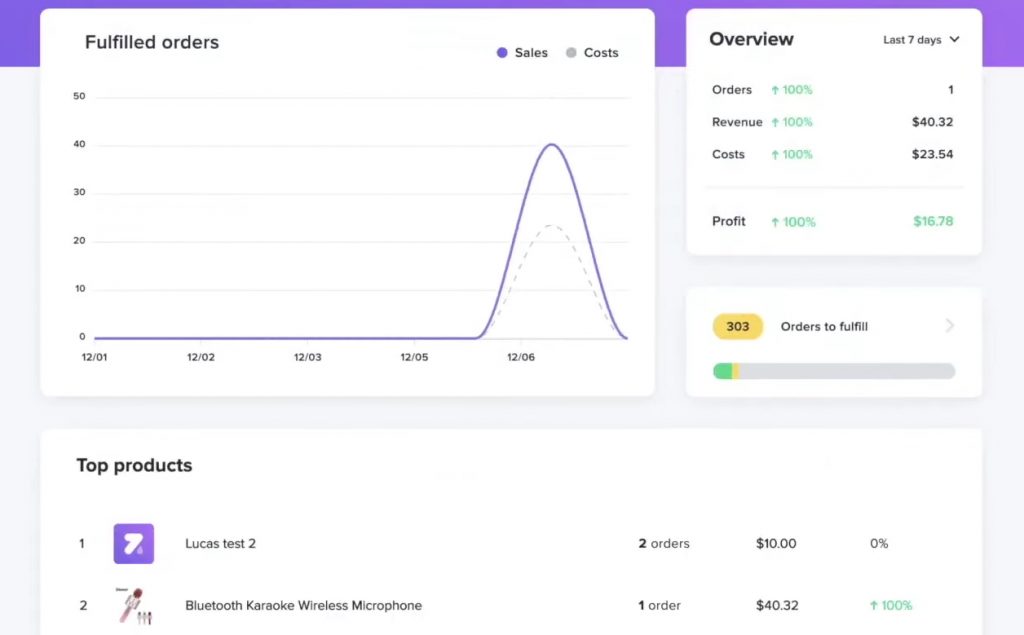
What’s more, Zendrop helps you save time and grow your e-commerce brand with:
- automated order processing,
- premium shipping options in the United States,
- choice of brand customization,
- analytics in real-time.
Whether you sell subscription boxes or single items, you can save time and money and keep customers coming back.

App #4: Spocket
Spocket puts you in touch with reliable vendors who sell only top-notch goods. It provides a curated assortment of goods in addition to handling requests and customer service. Hundreds of merchants from the US, Canada, Europe, Asia, and Australia offer fast shipping on thousands of items.
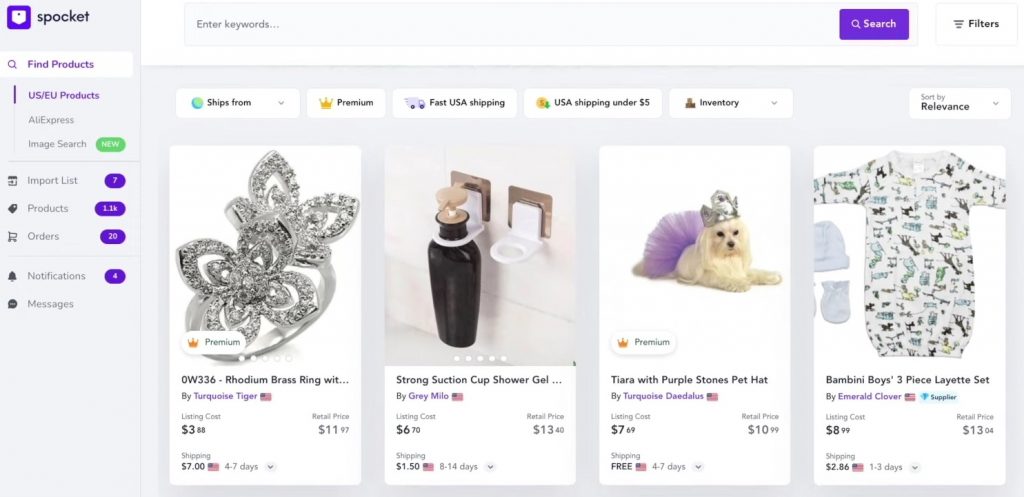
Gain access to bulk pricing with significant savings even on low-quantity orders, and boost brand recognition with custom invoice printing. With automated Shopify dropshipping via API, importing products and having them fulfilled by AliExpress is a breeze. Also, it’s easy to switch over to Oberlo or DSers if you’re already using either service.
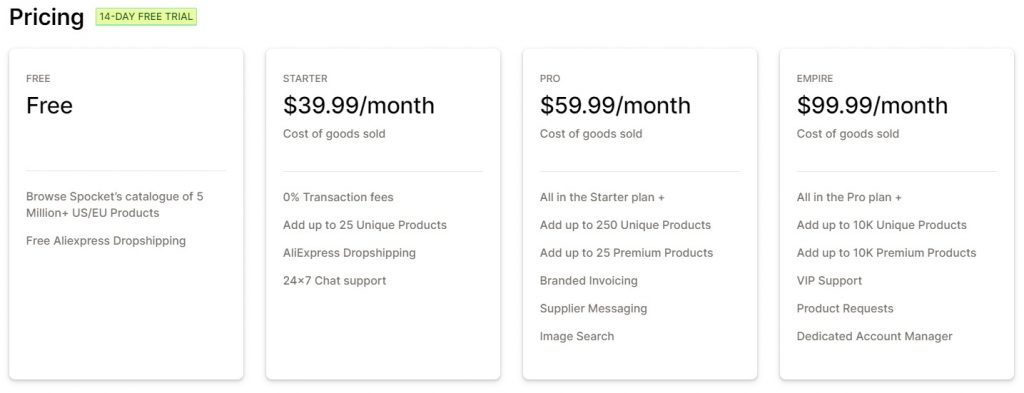
App #5: CJdropshipping
CJdropshipping gives business owners powerful tools that help them make the most of their operations. In particular, the app specializes in:
- Personalization of goods and packaging (POD, OEM),
- the ability to calculate shipping costs and strategies,
- importing goods from Taobao or AliExpress.
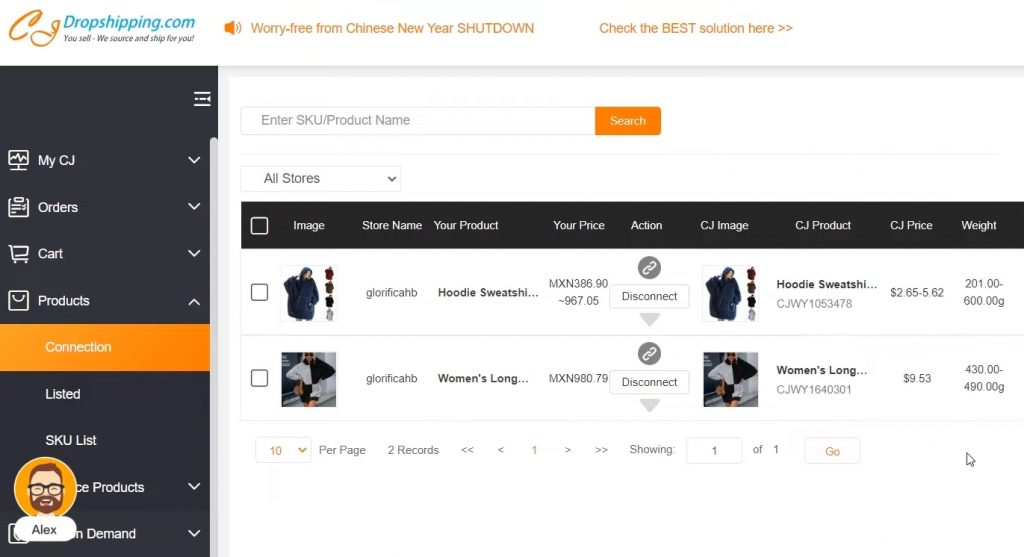
With CJ’s centralized control panel, orders are processed automatically, streamlining operations at every stage. Meanwhile, besides the dropshipper packages, all of CJ’s core features are available to all users at no cost.
App #6: AutoDS
The more than 25 US, EU, and international suppliers supported by AutoDS include online marketplaces like Amazon, Etsy, and eBay. As a result, you won’t have to spend a ton of time doing things like stocktaking and pricing adjustments. Your entire chain of stores can be monitored and controlled with a single app. That is to say, there is no need for manual intervention; the synchronization of inventory and prices can occur instantly and automatically. This will free you up to focus on growing your company, where your efforts are most needed.
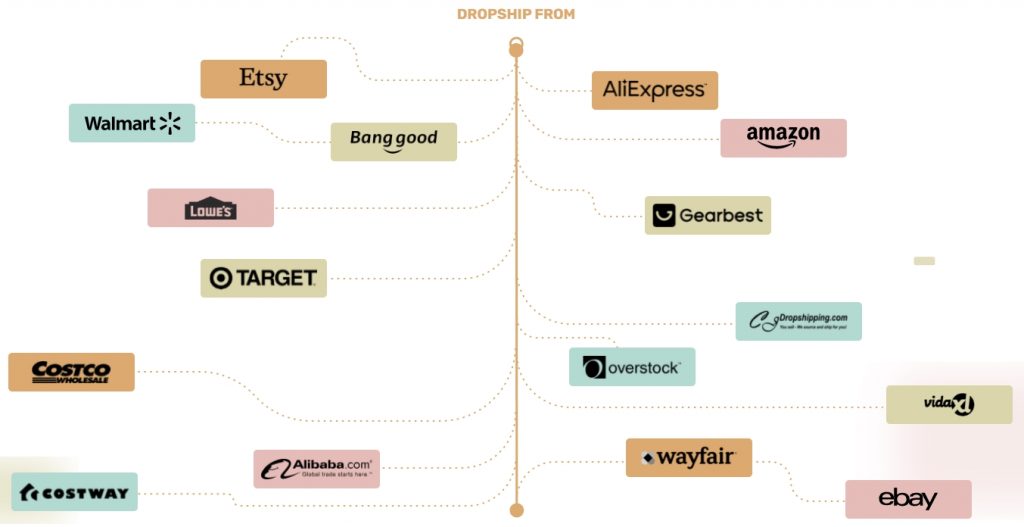
Smart product optimization automatically updates your images, titles, descriptions, and prices without you having to lift a finger. To ensure that your product listings always reflect inventory changes, you can adjust automation to your needs.

App #7: Trendsi
When it comes to sourcing, manufacturing, and distributing products, Trendsi is the name you need to know. Spend less time on complex supply chain processes with this Shopify app. In particular, you can buy premium goods from well-known foreign vendors with higher profit margins than local vendors.

Custom packaging or private labeling, in addition to the real-time smart inventory sync, will guarantee that you never run out of stock. By the way, installing and using it is free. Before Trendsi will fill an order, the seller must pay for the product and shipping.
App #8: Printful
When it comes to print-on-demand Shopify dropshipping services, Printful is your best bet. Customers can make or upload designs to be printed or embroidered on t-shirts, wall art, blankets, apparel, and more at no upfront cost. In the privacy of your home, of course. The simple but powerful design tools allow you to brand all packaging, including pack-ins and packing slips.
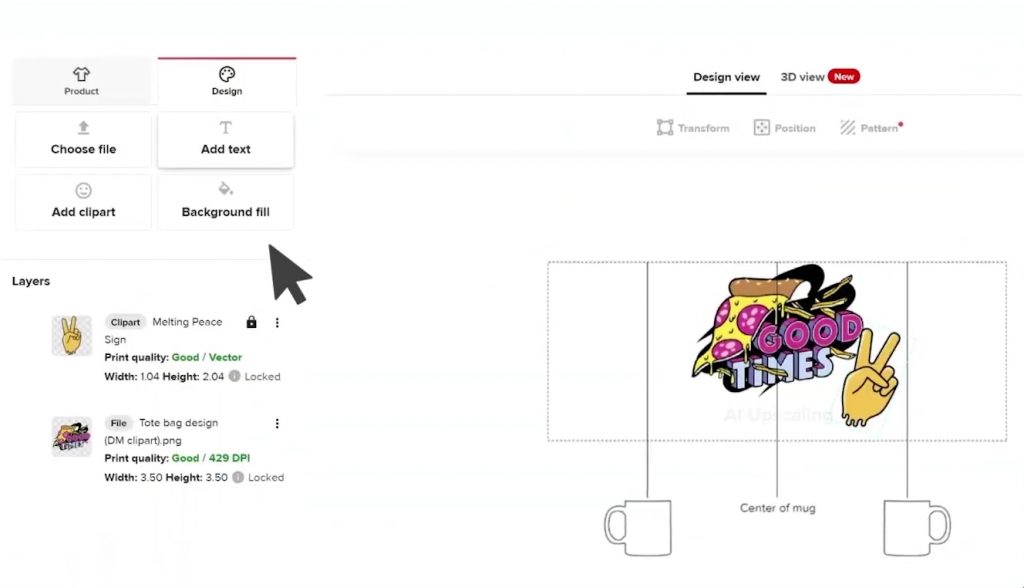
Printful allows you to make custom merchandise to promote your brand while the service handles the manufacturing process from start to finish. Simply create your product designs and upload them to the service, and they will handle the rest, from printing to shipping.
App #9: Dropshipman
Dropshipman takes care of everything, from finding AliExpress products to shipping them. Moreover, importing, organizing, and managing assortments are all made easier with this app. Its simple interface lets you bulk order, sync orders with suppliers, and find profitable products. Dropshipman also lets businesses work with two reputable logistics companies, 4PX and Yunexpress.
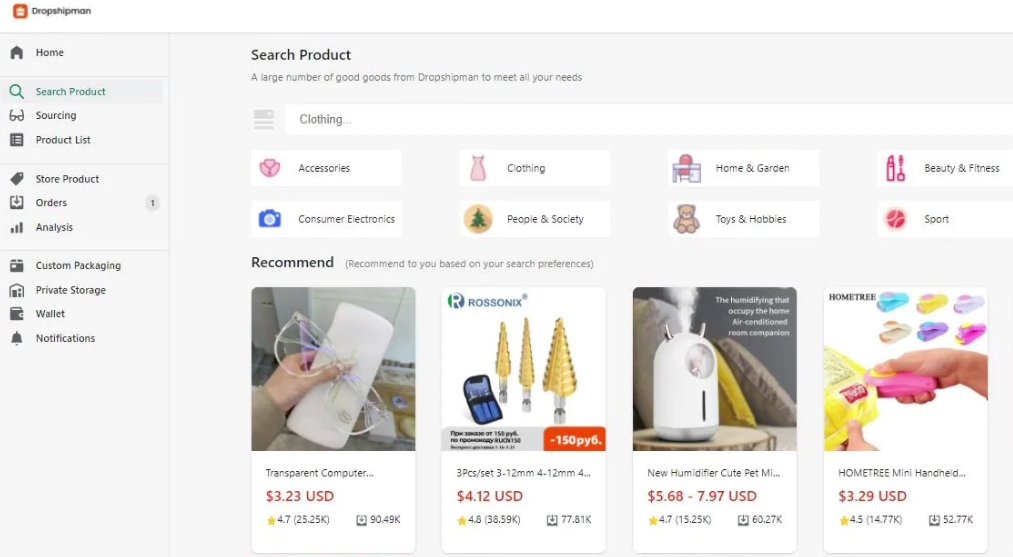
You’ll also take advantage of other features, like branded packaging, when you use the app’s storage services. Plus, multilingual personal agents (English, German, Spanish, and French) will answer all your service questions. By the way, the vendor gives you a free trial for 180 days.
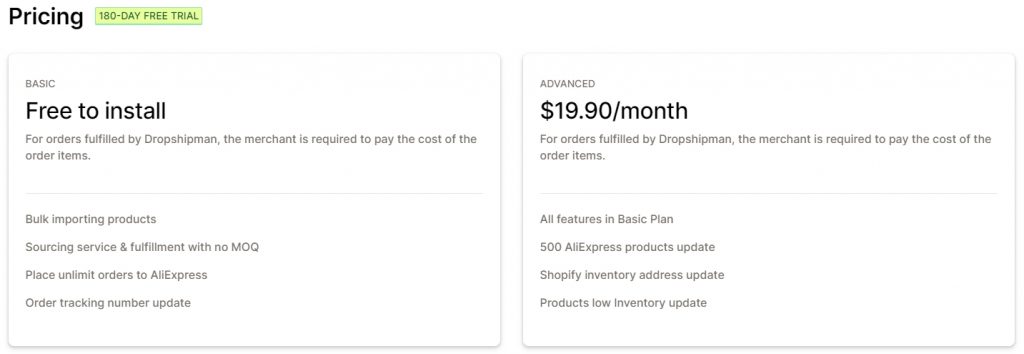
App #10: Ali Orders
Ali Orders by FireApps allows you to quickly and easily access one of the largest B2B marketplaces for high-quality Chinese goods at competitive prices. The things you’re able to do with this Shopify dropshipping app are:
- streamline product selection,
- create optimized listings with competitive pricing strategies,
- manage orders in bulk to maximize time savings while increasing profits.
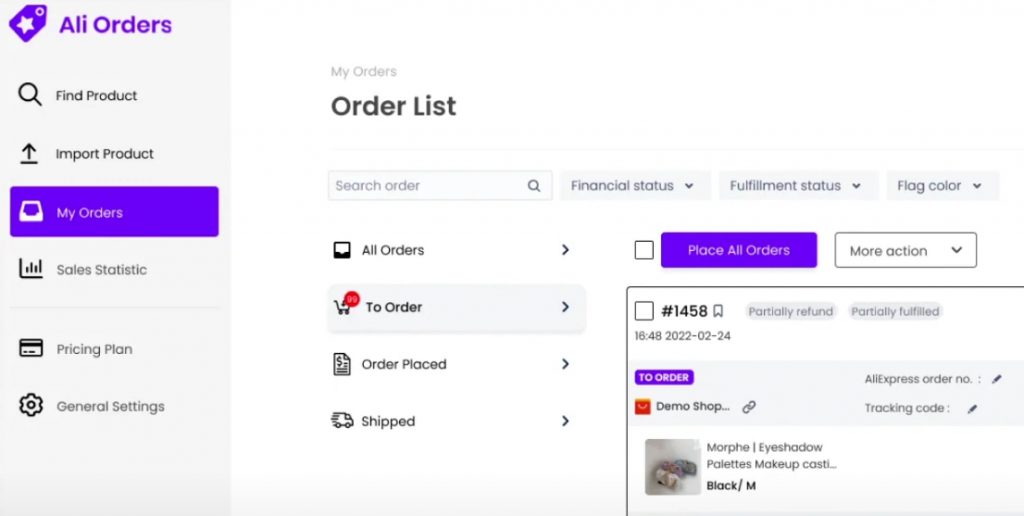
The drag-and-drop interface makes it simple for even inexperienced business owners to source products with minimal effort and expertise. To keep your Shopify storefronts up-to-date, you will have access to real-time inventory and tracking data. Moreover, you’ll be able to use powerful order processing tools that are integrated with the AliExpress API. Finally, there will be potent analytics tools at your disposal, providing invaluable insights into customers’ buying patterns and more.
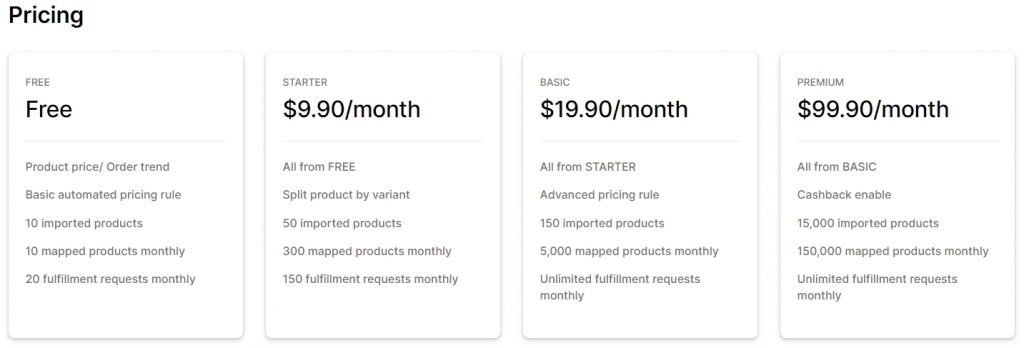
Tips for Choosing the Best Shopify Dropshipping Suppliers
- Before choosing a Shopify dropshipping app, consider the functions your company requires.
- Find out what kinds of automation features, shipping integrations, and payment integrations the add-ons you are considering offer. Check out the aforementioned popular apps as a starting point for your research.
- Find an application that works with your budget and needs by comparing its functions and prices.
- It’s also a good idea to read customer reviews to find out which extras have the most dependable shipping and customer service.
- Finally, check if the software is compatible with any other third-party applications that you may already have set up on your platform. For example, Google Analytics or SEO tools like Yoast SEO. Thus, you’re able to employ several solutions in a single location without encountering any complications during setup or upkeep.
Resources for Learning More About Dropshipping
We’re here to assist business owners who are curious about the model of drop-shipping. With these helpful tools and your industry knowledge, you’ll be well on your way to becoming an e-commerce guru in no time.
- Dropshipping Step-by-step: An Ultimate WooCommerce Guide – The manual will lead you through the process and teach you the fundamentals of WooCommerce dropshipping.
- Ecommerce: Dropshipping or Classical Online Store? – Find out how drop-shipping is comparable to conventional online stores and what benefits each offer.
- What CMS Should You Pick for Your Dropshipping Business? – A seasoned marketer will guide you in making the best content management system (CMS) decision for your drop-shipping business.
Oberlo Plugin: How to Become a Dropshipping Sensei without Effort – Learn how the Oberlo plugin can turn you into a dropshipper expert with minimal time and effort invested.
Shopify Dropshipping Apps FAQ
In this model of e-commerce fulfillment, the online shop itself does not keep any of the products in question in stock. Customers’ orders and shipping details are instead transmitted to the manufacturer or another retailer. This process enables Shopify merchants to provide their customers with a broader selection of options at competitive prices. And there is no stress or concern for sellers regarding stock.
The first step in beginning a Shopify dropshipping business is creating a supplier account with a supported vendor. Then, import the supplier’s products into your online store using the CSV files they provide, and establish shipping and tax rates. Following that, you’ll be able to market your products via social media and advertisements.
Start-up costs include a subscription to Shopify, a domain name, web hosting, and marketing. In particular, the CMS has different plans that start at $24 per month (billed yearly). You will need to buy a domain name, choose a web host, and promote your store through online advertising, social media marketing, or content marketing. Overall, expect to spend at least a few hundred dollars to start a Shopify dropshipping business.
It could take anywhere from 24 hours to 7 days. It depends on things like how quickly images are resized and how quickly data feed integration systems are (if you choose to use them). How well the catalog structure is set up throughout the initialization phases, etc., also plays a role.
The post Shopify Dropshipping Apps in 2023: Top Picks appeared first on MonstersPost.
